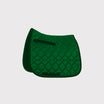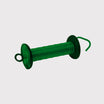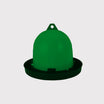Cystitis is the official term for a bladder infection. Cystitis is a regular occurrence in cats. Cystitis can be caused by an infection. For example by bacteria, but also by fungi and viruses. Cystitis often has no obvious cause.
Cystitis in cats is often chronic and keeps coming back at intervals (recurrent). The exact cause is unknown, but there are several factors that seem to play a role. For example, this bladder infection mostly occurs in cats younger than 10 years old. Neutered animals seem to suffer more often than non-neutered cats. Most cats with cystitis are overweight, live in pens, get little exercise, and are fed mostly dry food. Stress is also an important factor in the occurrence of bladder infections in cats.
How can I recognize a bladder infection in my cat?
Many cats with cystitis experience pain as a result. Your cat will look for a place other than the litter box to pee. In addition, your cat has a constant urge to urinate without the bladder being sufficiently full. As a result, your cat will urinate into small puddles very frequently. Occasionally the urine may be slightly red; it contains blood. Urinating in small puddles indoors should not be confused with urinating indoors due to a behavioral problem. It is therefore always important to have your vet check the urine if your cat is exhibiting any unwanted urinating behaviour.
In many cases it will be necessary for the vet to examine the cat as a bladder infection is not always so obvious and there may be other causes of the constant peeing (e.g. constipation). Take some urine with you to your vet visit. This way your vet can examine him directly. It is best if this urine is as fresh as possible and not older than 4 hours. It is often noticeable that the urine shows no changes.
If necessary, your veterinarian may recommend an ultrasound scan. In the case of a bladder infection, you can see a thickened bladder wall.
How is bladder infection in cats treated?
Because cystitis in cats is rarely the result of an infection, antibiotics are rarely recommended.
Treatment is to relieve symptoms. This is usually done by taking an anti-inflammatory that also contains a pain reliever. This will both soothe the bladder wall and relieve pain. Your cat will be more comfortable and recover faster.
For many cats, feeding wet food also seems to help produce more urine. Stimulating water intake also seems to help. There are special water games for cats to buy for this purpose.
In addition, when treating cystitis, it is very important to reduce stress. This can be achieved with special vaporizers that release pheromones. You can hang these in the room where your cat spends the most time. In many cases these vaporizers have a positive effect, but often this needs to be combined with an anti-inflammatory.
In most cases, cats recover within a week of starting therapy.
So what can I do about bladder infections in cats?
In many cases, stress plays an important role. Some cats get a bladder infection once, but for most cats it always comes back. A change in the environment is often enough to trigger another bladder infection. For example, moving house, having a baby, or adopting a new cat can cause so much stress that your cat gets cystitis again. In this case, the treatment is the same as last time.
If the symptoms keep coming back or don't go away. Further urine tests may then be required. Occasionally your cat may still have a bacterium. In this case, it is necessary for your veterinarian to obtain "sterile urine". To do this, he or she can take some urine from the bladder with a needle. This is often not painful for your cat at all, and most cats are fine with this. Your vet can then culture this sterile urine to see if bacteria are present. If this is the case, antibiotics are required.
This text was translated by a translation machine
 Horse Pharmacy
Horse Pharmacy Rugs
Rugs Care
Care Saddle and Attachments
Saddle and Attachments Leg Protection
Leg Protection Bridles
Bridles Feed
Feed Fly Masks
Fly Masks Saddle Pads
Saddle Pads Headcollars and Ropes
Headcollars and Ropes Bits
Bits Other Disciplines
Other Disciplines Reins and Auxiliary Reins
Reins and Auxiliary Reins Clipping
Clipping Western
Western Eventing
Eventing Foals
Foals Reflection
Reflection Therapy Products
Therapy Products Boots and Shoes
Boots and Shoes Breeches and Belts
Breeches and Belts Tops
Tops Safety
Safety Competition
Competition Heated Clothing
Heated Clothing Gloves
Gloves Socks
Socks Spurs and Attachments
Spurs and Attachments Technology
Technology Whips
Whips Gifts
Gifts Casual Wear
Casual Wear Underwear
Underwear Rider Pharmacy
Rider Pharmacy Bags
Bags Books
Books Laundry supplies
Laundry supplies Jewelry
Jewelry Feed and Waterbowls
Feed and Waterbowls Equipment
Equipment Tack Room
Tack Room Pest Control
Pest Control Arena
Arena Horse Toys
Horse Toys Wheelbarrows
Wheelbarrows Yard
Yard Surveillance
Surveillance Disinfect
Disinfect Washing Area
Washing Area Lighting
Lighting Horse Pasture
Horse Pasture Current Conductors
Current Conductors Pole
Pole Insulators
Insulators Energisers
Energisers Gate Handles
Gate Handles Batteries and Accumulator
Batteries and Accumulator Nets
Nets Grounding
Grounding Tools
Tools Fencing Security
Fencing Security Wolf Defense
Wolf Defense Fencing Sets
Fencing Sets Fence locks
Fence locks Dogs
Dogs Cats
Cats Rodents
Rodents Dogs Pharmacy
Dogs Pharmacy Cats Pharmacy
Cats Pharmacy Rodents Pharmacy
Rodents Pharmacy Cattle Pharmacy
Cattle Pharmacy Poultry Pharmacy
Poultry Pharmacy Veterinary Supplies
Veterinary Supplies Cattle
Cattle Sheep and Goats
Sheep and Goats Poultry
Poultry Heat Lamps
Heat Lamps Calves
Calves Marking
Marking Halters
Halters